Abstract
In vitro activation of dark-inactivated pyruvate, orthophosphate dikinase extracted from maize (Zea mays L. cv. Golden Cross Bantam T51) leaves was examined. The inactive form of the enzyme and orthophosphate behaved kinetically as substrates for the reaction, which was catalyzed by an activating factor. This factor was bound by Blue Dextran Sepharose 4B and could be eluted by KCl at a concentration of 0.5m. The molecular weight of the maize leaf activating factor was about 88,000. Cibacron Blue 3G-A, a reactive moiety of Blue Dextran, inhibited the factor competitively with respect to the concentration of the inactive dikinase with a Ki of 4.6 micromolar. Adenosine diphosphate and pyrophosphate were also found to be competitive inhibitors of activation, with respect to the inactive dikinase, giving Ki values of 90 and 140 micromolar, respectively. Adenosine, other nucleotide diphosphates, and dinucleotides gave little or no inhibition of activation. These results suggest the association of a nucleotide, presumably nucleotide diphosphate, with the inactive form of pyruvate, orthophosphate dikinase.
Full text
PDF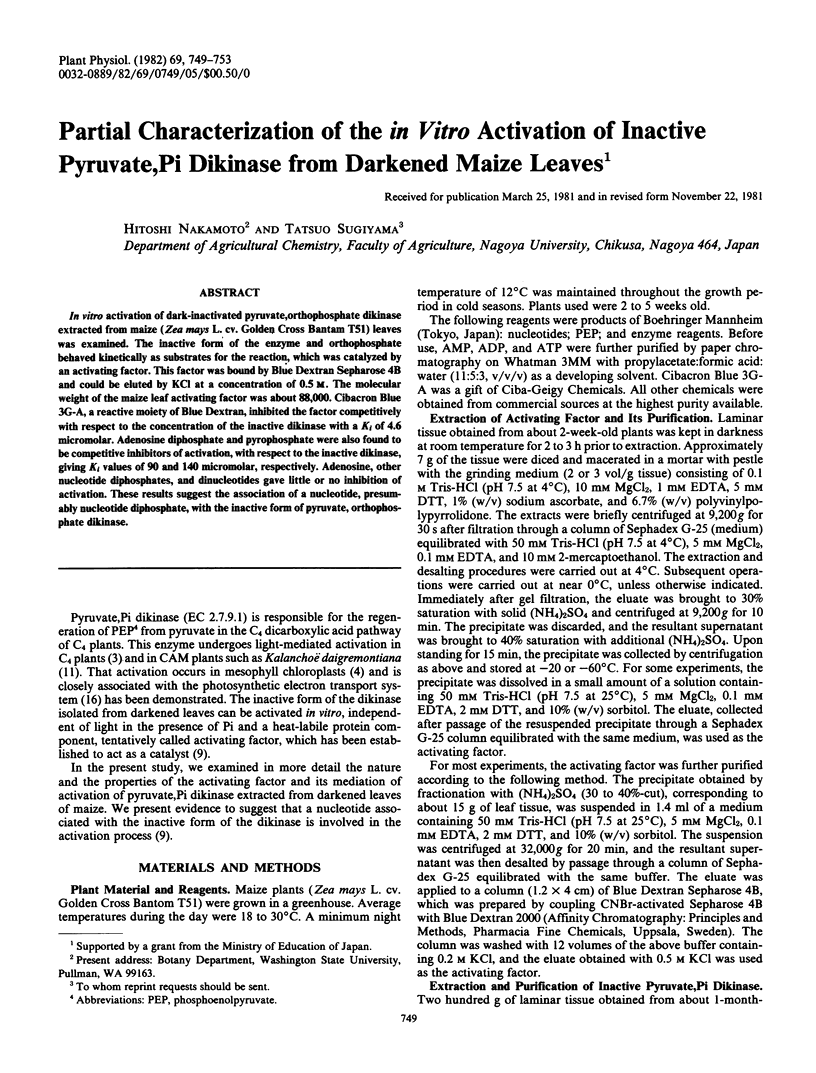
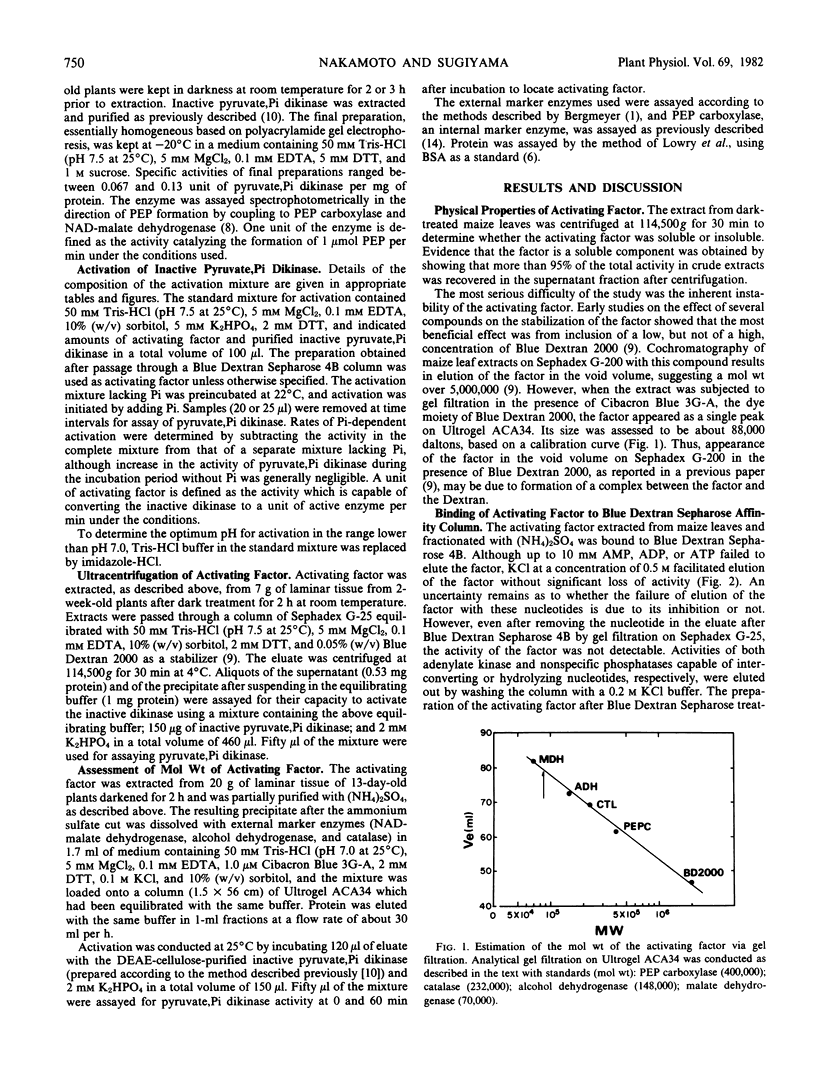
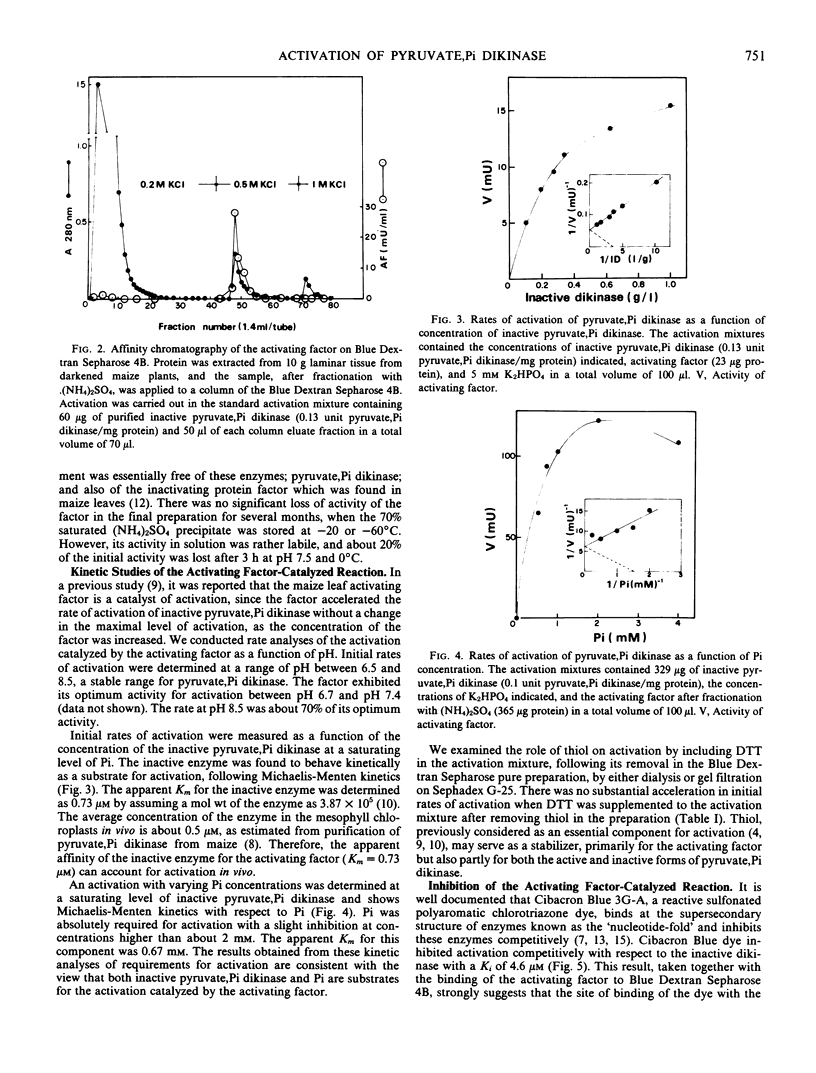
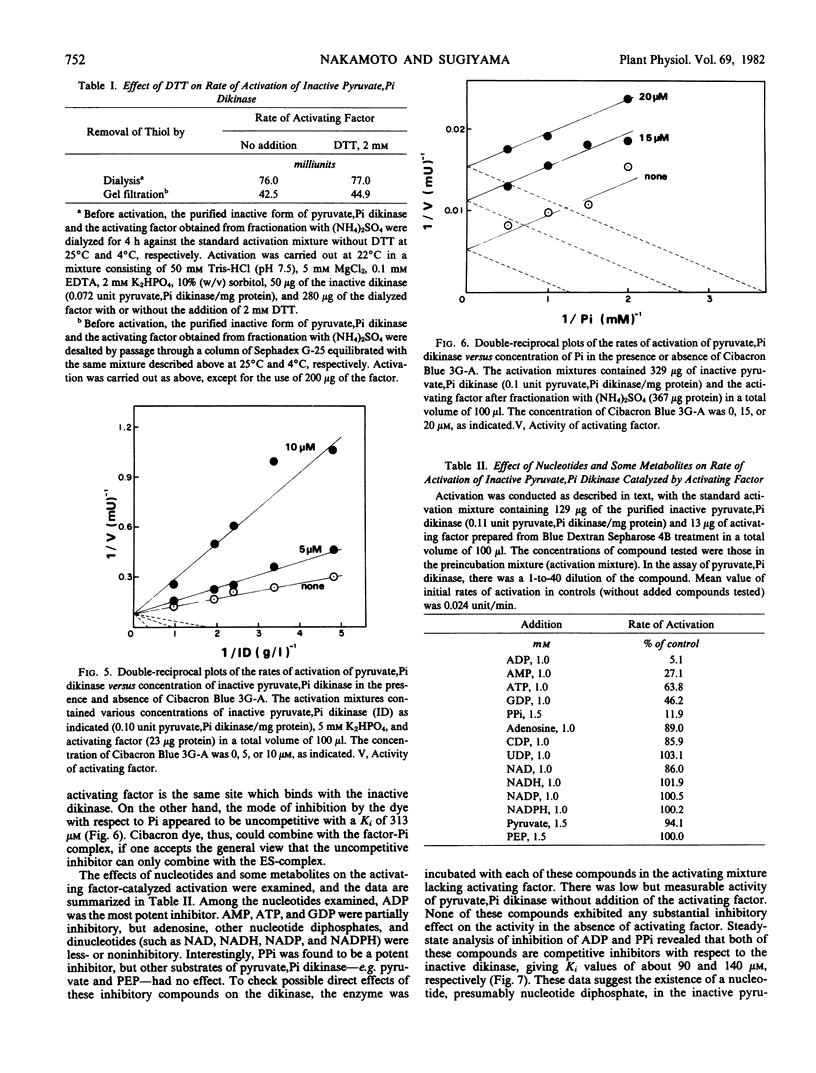
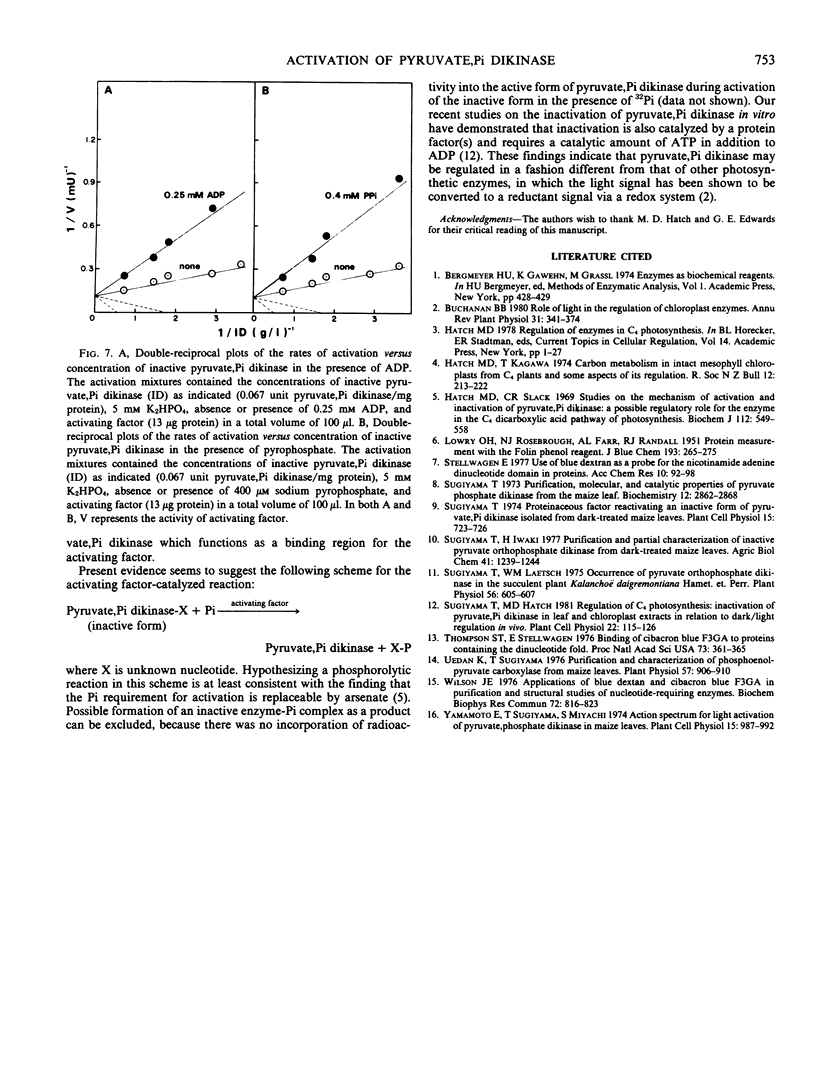
Selected References
These references are in PubMed. This may not be the complete list of references from this article.
- Hatch M. D., Slack C. R. Studies on the mechanism of activation and inactivation of pyruvate, phosphate dikinase. A possible regulatory role for the enzyme in the C4 dicarboxylic acid pathway of photosynthesis. Biochem J. 1969 May;112(5):549–558. doi: 10.1042/bj1120549. [DOI] [PMC free article] [PubMed] [Google Scholar]
- LOWRY O. H., ROSEBROUGH N. J., FARR A. L., RANDALL R. J. Protein measurement with the Folin phenol reagent. J Biol Chem. 1951 Nov;193(1):265–275. [PubMed] [Google Scholar]
- Sugiyama T. Occurrence of Pyruvate Orthophosphate Dikinase in the Succulent Plant, Kalanchoë daigremontiana Hamet. et. Perr. Plant Physiol. 1975 Nov;56(5):605–607. doi: 10.1104/pp.56.5.605. [DOI] [PMC free article] [PubMed] [Google Scholar]
- Sugiyama T. Purification, molecular, and catalytic properties of pyruvate phosphate dikinase from the maize leaf. Biochemistry. 1973 Jul 17;12(15):2862–2868. doi: 10.1021/bi00739a014. [DOI] [PubMed] [Google Scholar]
- Thompson S. T., Stellwagen E. Binding of Cibacron blue F3GA to proteins containing the dinucleotide fold. Proc Natl Acad Sci U S A. 1976 Feb;73(2):361–365. doi: 10.1073/pnas.73.2.361. [DOI] [PMC free article] [PubMed] [Google Scholar]
- Uedan K., Sugiyama T. Purification and characterization of phosphoenolpyruvate carboxylase from maize leaves. Plant Physiol. 1976 Jun;57(6):906–910. doi: 10.1104/pp.57.6.906. [DOI] [PMC free article] [PubMed] [Google Scholar]
- Wilson J. E. Applications of blue dextran and Cibacron Blue F3GA in purification and structural studies of nucleotide-requiring enzymes. Biochem Biophys Res Commun. 1976 Oct 4;72(3):816–823. doi: 10.1016/s0006-291x(76)80206-9. [DOI] [PubMed] [Google Scholar]


